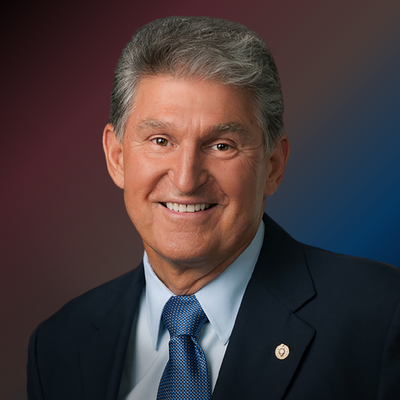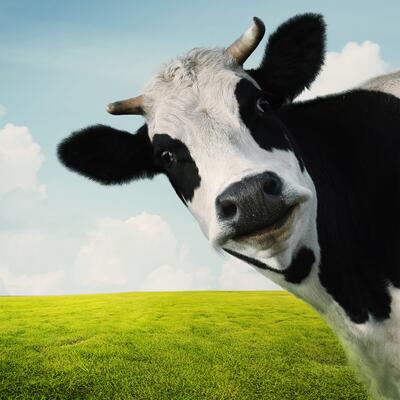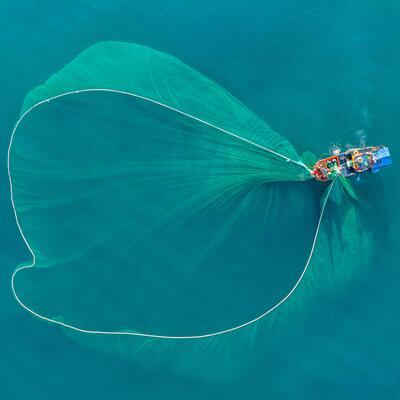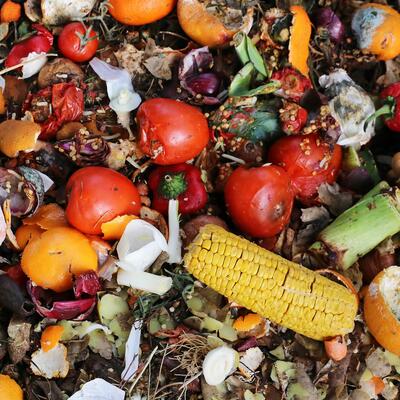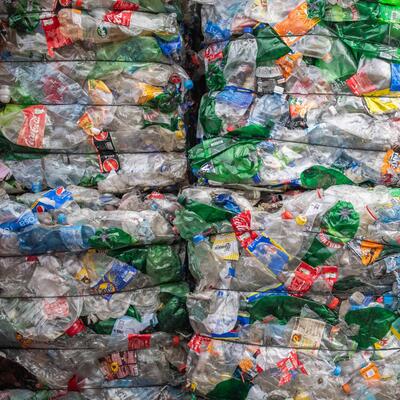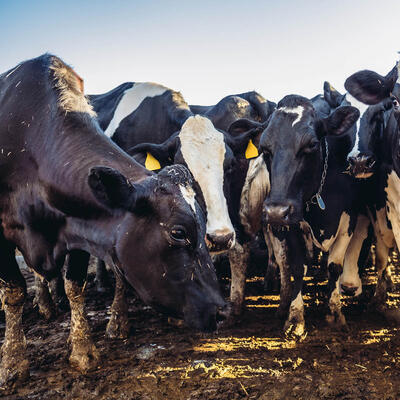
Cow Poop and Compost: Digesting the Methane Menace
Guests
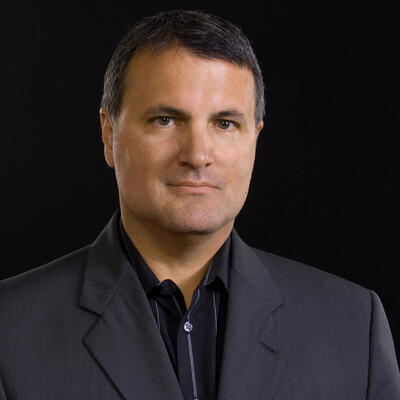
Michael Boccadoro

J Jordan
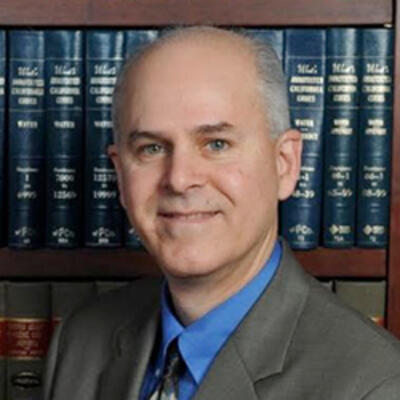
Neil Edgar
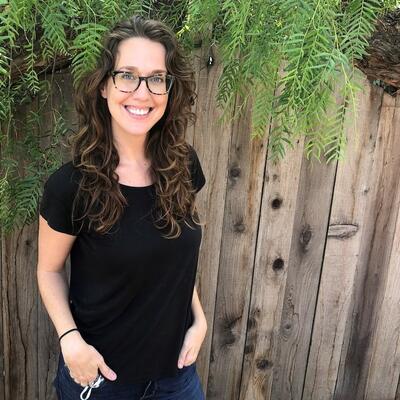
Monique Figueirado
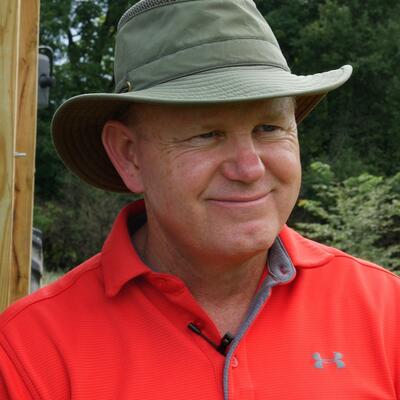
Allen Williams
Summary
Carbon dioxide isn’t only greenhouse gas being emitted into the atmosphere that’s damaging the climate. In a 20-year time frame, methane is actually 80 times more damaging to the climate than carbon dioxide. These emissions present a significant problem for policy makers and people alike. Over 100 countries, including the US, have signed the Global Methane Pledge. The goal is to reduce methane emissions 30% by 2030.
Nationally, 37% of methane emissions come from cows. “Enteric fermentation” - a polite way of saying burps and farts - accounts for 27% of a cow’s methane emissions. 10% is from manure. The second big emitter is food waste rotting in landfills, which accounts for 17% of national methane emissions.
California is trying to be a leader in methane reduction. This past January, a new law (SB 1383) went into effect directly addressing the state’s methane emissions from organic waste in landfills. In a show of ambition, the state’s target is a 40% reduction in methane emissions.
Communities in California are now required to collect organics and divert them to be made into compost that goes back into the soil or made into fuel. The law also regulates dairy farms, requiring them to limit emissions. For dairy farms, the primary tools for achieving those reductions are anaerobic digesters. These digesters are essentially tanks or enclosed lagoons where microbes break down manure to produce and capture methane that would otherwise go into the atmosphere.
Not everyone approves of using anaerobic digesters to reduce methane. J Jordan, Policy Coordinator at the Leadership Council for Justice and Accountability:
“There are other types of agro-ecological practices, management decisions, pasture-based dairy. There are other forms of animal agriculture that do not have such a devastating impact on the environment, on people.”
Allen Williams, a 6th generation family farmer and founding partner of Understanding Ag, has experience with alternatives to Concentrated Animal Feeding Operations, or CAFOs.
“If you’re gonna have a CAFO system, you know you're going to produce more methane that's gonna be released into the atmosphere. So yes, you better be feeding something to reduce that methane or either using and even using methane digesters. But if you're out on a pasture system using adaptive grazing none of that is needed. It goes by the wayside because you no longer have those same issues existing.”
Michael Boccadoro, Executive Director of Dairy Cares, has a different take on the scalability of pasture based dairy farms:
“Let's not lose sight of the fact that those farms are gonna be much less efficient in terms of producing milk, which means we’re going to need a lot more cows in California to produce the same amount of milk. And that's going to overall lead to higher greenhouse gas emissions, not lower.”
Proper composting can also drastically reduce methane emissions and regenerate topsoil. Monique Figueiredo, CEO, Founder, and Co-Owner of Compostable LA is the driving force behind a company attempting to make composting more convenient.
“Composting is so impactful for the climate because of two things. One: it takes organics out of a landfill, and organics in a landfill become methane. They kind of slowly mummify while rotting, because the conditions in a landfill are so tightly packed that they create these anaerobic conditions, these conditions without oxygen. And when that happens food scraps can’t decompose properly, and so they release methane, which is way worse than carbon dioxide in the first 20 years of its life. So if we’re talking about reversing climate impacts before 2050, like a lot of the scientists are saying, we have to get methane under control.”
Related Links:
https://ec.europa.eu/commission/presscorner/detail/en/statement_21_5766
https://leginfo.legislature.ca.gov/faces/billNavClient.xhtml?bill_id=201520160SB1383
Full Transcript
Greg Dalton: This is Climate One. I’m Greg Dalton. Over a 20 year period, methane is even more damaging to the climate than carbon dioxide. Food scraps create a significant chunk of the methane released into the atmosphere, as they rot in landfills.
Monique Figueiredo: They kind of slowly mummify while rotting, because the conditions in a landfill are so tightly packed that they create these anaerobic conditions, these conditions without oxygen. And when that happens food scraps can’t decompose properly, and so they release methane. So if we’re talking about reversing climate impacts, we have to get methane under control.
Greg Dalton: Proper composting can drastically reduce methane emissions and regenerate topsoil.
Allen Williams: In the US alone we waste approximately 40% of our food that’s produced annually. Why not take that waste and turn it into something that’s gonna be very beneficial to us?
Greg Dalton: Digesting the Methane Menace. Up next on Climate One.
Greg Dalton: This is Climate One, I’m Greg Dalton. Today Ariana Brocious and I are digging into compost – and cow poop.
Ariana Brocious: Yeah, manure REALLY matters because nationally 37% of methane emissions come from cows – a lot of that is actually cow burps, but a big chunk is cow poop.
Greg Dalton: Right. And not just manure – landfills release a lot of methane too. In fact, 17% of all US methane emissions come from landfills. And most of that is from food waste.
Ariana Brocious: In a 20-year time frame, methane has 80 times more warming power to the climate than carbon dioxide.
Greg Dalton: California has a new law that aims to tackle methane from these two main sources - cows and landfills. We’re spending today’s show talking about it because California has a track record of setting national policy, or at least, leading by example.
Ariana Brocious: Last year at COP26 in Glasgow, more than 100 countries - including the US - signed The Methane Pledge, promising to reduce methane emissions by 30% by 2030. The California law targets a 40% reduction in the same time frame. So, it’s ambitious.
Greg Dalton: It is. The more I learn about this law (known as SB 1383) the more interesting - and complicated - it gets. The law was backed by a rancher I’ve known for years, John Wick, who wanted to increase the supply of compost to spread on grasslands. He says studies show that causes more grass to grow and perform photosynthesis that pulls carbon from the atmosphere and stores some of it in soil. Soil people are some of the biggest optimists in the climate conversation. As the idea worked through the California legislature, the dairy and agriculture industries opposed it. At one point near the end of the legislative session, dairy walked out of the negotiations. Then the law was changed to include a lot of voluntary rules and subsidies. That brought big ag back on board. Some environmentalists say that watered down the law.
Ariana Brocious: Still, the law you’re talking about went into effect in January. And it directly addresses the state’s methane emissions from food waste in landfills. Communities are now required to collect organics (meaning food and yard waste - the definition here is that anything that was once alive is organic) and divert them to be made into compost that goes back into the soil or made into fuel. It’s a big change in the way waste is handled for 40 million people. And it’s also a big deal for California’s seven-and-a-half billion dollar dairy industry.
Greg Dalton: Right. And they have to cut their methane emissions by 40% as well. That’s a big ask for the top dairy-producing state in the country.
Ariana Brocious: For dairies, the primary tools for achieving those reductions are anaerobic digesters. These are essentially tanks or enclosed lagoons where microbes break down manure to produce and capture methane that would otherwise go into the atmosphere. That gas can then be sold as a fuel.
Greg Dalton: Proponents say turning waste into energy is a good step for addressing climate disruption. But as I said, it gets complicated. So stick with us as we uh, wade through it.
Greg Dalton: Because investment and ownership structures are complex and varied, it’s hard to make blanket statements about who profits – and by how much – from the sale of the gas captured by dairy digesters. According to Aaron Smith, an economist at UC Davis, credits from California's low carbon fuel standard could earn a dairy 50% more money than just selling the cows’ milk. He’s not saying that the manure is more valuable than the milk, but dairies could profit selling both. I asked Michael Boccadoro, Executive Director of Dairy Cares, if this creates an incentive to add cows that will poop more money.
Michael Boccadoro: Absolutely not. … The reality is the dairy farmer is seeing somewhere between in most cases, $100-$200 per cow per year… they're being paid to provide manure feedstock for the digester. The rest of that operation and revenues are handled by the developer and you know there's a lot of costs associated with these projects. They cost about $3000 per cow to install so they can easily be upwards of 6, 8, $10 million per project that’s just on the dairy. And then there's huge costs associated with what we call the hub where the gas is cleaned, conditioned and compressed into a natural gas pipeline. Those facilities can easily run between 15 and $20 million additional. So, huge costs associated with all of this. Most of that money is not flowing to the dairymen and as a result of that, the dairyman has little incentive to add cows. Cows are added on a dairy based on milk economics not on biogas economics. It's just that simple.
Greg Dalton: But according to J Jordan, Policy Coordinator at the Leadership Council for Justice and Accountability, the added financial incentives to generate biogas lead to more concentrated dairies, worsening environmental impacts on nearby communities of color.
J Jordan: The way that the bill has played out has actually been incentivizing the status quo, right, incentivizing the way that we produce dairy in this state which relies on manure lagoons, these large pits in the ground where they put the liquefied manure and that's kind of where we see you know some of the issues is from that management style. …Incentivizing large-scale factory farms and incentivizing the additional water and air quality pollution or air pollution incentivizing larger herd sizes larger dairies by giving funding for things like dairy digesters to produce factory farm gas from those manure lagoons.
Greg Dalton: Michael Boccadoro agrees that scale makes it easier for dairy producers to take advantage of state incentives for implementing digesters, but he takes issue with the idea that this leads to more cows overall.
Michael Boccadoro: The data directs us in an entirely different conclusion and that conclusion is cow numbers in California are declining, not increasing. They’ve declined for the past 14 years since 2008 in the state and all expectations are the number of dairy cows in the state are going to continue to decline somewhere between a half of a percent per year and 2% per year. Lots of reasons for that but labor costs, water scarcity, other issues are driving farming in California to downsize, not just the dairy farms. We’re expected to lose about 1 million acres of productive farmland in California over the next decade because just from water scarcity concerns and groundwater regulation on the state. That doesn't mean a few dairies won't get a little bit larger. We’re always looking for opportunities any business to grow its business a little bit to offset rising costs. And I think we all know we’re seeing rising costs right now with inflation. So, always some incentive to increase but it all has to be done with proper environmental permitting too. And I think that's often lost on folks, the level of regulation that these dairies face in California. And so, each of these projects is regulated for air quality for water quality for local land use. And in addition to that, if we get a grant for one of these projects, we have to do outreach to the local communities, including the disadvantaged communities in the state. So, there's tremendous amount of effort built into the process to give local communities the opportunity to raise concerns and then the projects can seek to mitigate those concerns.
Greg Dalton: Yet according to J Jordan and others I’ve spoken with, the environmental justice community got left out of the final shaping of the law. Not only that, but in exchange for accepting methane limits, the dairy industry got a temporary pass on complying with new environmental regulations.
J Jordan: Leadership Counsel for Justice and Accountability and our partners environmental justice groups, climate justice groups we really weren't a big part of the conversation; we weren't really consulted and brought into that negotiation of area effectively during the development of SB 1383. So, you know, there were some changes and things that were included in the bill in the legislation that you know didn't necessarily fit with the types of priorities that we have. So, one of those things is that the bill really looks at trying to reduce methane emissions from dairies by 40% by 2030. So, really trying to you know decrease our greenhouse gas emissions as a state knowing that methane from livestock is a really big producer of methane and which is an extremely potent greenhouse gas. And so, from our perspective, I think you know we were really looking at well, maybe we should be thinking about regulating dairies like we do so many other industries in the state of California in order to deal with the climate change issue, this crisis that we’re all facing today. And regulations are really important because it’s much more of a direct way of reducing emissions rather than sort of spending years and years and years trying to put money into various incentives to reduce that methane. So, one of the things that was included in the bill at the last minute was that the state could actually not regulate dairies any time before January 1 of 2024. And that's been a really big sticking point for us because what we’d like to see is those regulations actually start now before we kind of continue to dig ourselves into a deeper and deeper hole.
Greg Dalton: Michael Boccadoro:
Michael Boccadoro: I struggle with the concept that this was in any way a pass. The idea that reducing methane by 40%,... it's extremely, extremely ambitious. And yes, there are incentives in this law and in all of California's climate programs for the regulated entities. The cap and trade program is another great example that regulates many of the industries you talked about that's designed around a market-based incentive program. The money that's raised from the cap and trade program goes into a program we call the climate investments portfolio and that money is then spent on projects like digesters to reduce greenhouse gasses. And in fact, the dairy digester program is the most effective program that is currently being implemented in California across the board. It's providing about 30% of the reductions from all the programs combined and it’s receiving about 2% of the funding. So, it's a tremendously effective program. But I think that the big point here is we did make sure that the incentives would be there and we also made sure that policies going forward would not in any way simply displace the dairy industry in California, what we call leakage and simply have that pop up in another state or another country. Because that's a big concern. We’re very efficient here and we shouldn't lose sight of what efficiency can provide. But if our cows are simply put on U-Haul trucks and shipped to another state, emissions are likely going to be higher; they’re not going to be regulated. And as a result, global climate change gets worse, period. That's not success; that's failure. So the program in California was designed to ensure success and incentives are the best way to ensure success and incentives have been shown is the best way to keep costs down for consumers.
Greg Dalton: One problem here - as with other climate policies - is that even if there’s a net reduction in statewide climate-disrupting emissions, there may still be negative local impacts.
J Jordan: In all the work that we do, we’re looking out for ways that the state's efforts to reduce greenhouse gas emissions and combat climate change, which is obviously so critical. How are they also prioritizing social equity, public health, air and water quality and all of those things that are important to local communities? And we know that it’s mostly lower income communities of color who bear the weight of that localized industrial pollution and also the impacts of climate change.
Greg Dalton: So how do we bridge this divide? Many environmentalists believe the problem isn’t just with cow poop; it’s with the whole cow, and that completely eliminating cows from the food system is the single greatest climate-saving action we can take. But J Jordan doesn’t fall into that camp.
J Jordan: I have nothing against cows. This is definitely not their fault. No, we’re not here to talk about the elimination of cows in the state of California. We are here to talk about the trends that have led to people's drinking water being contaminated, not being able to take showers in their own homes, having particulate matter having you know various types of air pollution, having odors and flies around their homes as they watch these dairies expand. So, you know, this isn’t about trying to attack an industry, it's not about wanting an industry to go down. This is really about trying to protect the health and well-being of people and of the environment while also acknowledging the future for farmers. I think the reality is that the dairy industry is struggling and there is a lot to be gained, I think you know, from all sides of this issue if we rethink how we’re doing animal agriculture in the state. So, I do think that there are multiple benefits to transition to another type of agriculture that does not necessarily you know that is actually good for people that's good for the planet and that's good for farmers.
Greg Dalton: In other words, both sides agree on the importance of reducing methane emissions. But for J Jordan, this should be achieved through the level of regulation that other industries face, rather than incentivizing entrenched industrial agriculture.
J Jordan: We would argue that we shouldn't be relying on manure lagoons in the first place. And so much of the conversation at the state is about you know having these manure lagoons and accepting them as the baseline and what we want to push back on is that idea that you know this is some naturally occurring way of producing dairy that this is somehow the only way we could possibly ever produce milk in the state. And in reality, there are other ways. There are other types of agro-ecological practices, management decisions, pasture-based dairy. There are other forms of animal agriculture that do not have such a devastating impact on the environment, on people. And so, to sort of start with this baseline of well, the lagoons are there and they’re always gonna be there, I think really does a disservice to the communities that are being deeply impacted by that.
Greg Dalton: But how realistic is the idea that we could meet rising global demand with a pasture-based system? Later in this episode, Ariana Brocious speaks with Allen Williams, a sixth-generation farmer who argues not only that it can be done, but that if we raised only grass-fed cows, we wouldn’t need the digesters at all - that microbes in the soil of properly managed grasslands would absorb the methane as they did when the continent was covered with other ruminants like bison and elk. Michael Boccadoro of Dairy Cares has a different take:
Michael Boccadoro: With all food production, including dairy, efficiency is our friend. We produce more food with fewer resources. That's a huge benefit for these consumers and for the state from an environmental standpoint, it's phenomenal. And we've been doing that in California producing more milk with fewer cows and it benefits the environment across the board. According to the University of California, that did some research a few years ago, 89% less land, 88% less water. 45% less greenhouse gasses, less fossil fuel, less fertilizer, less pesticide. So, across-the-board environmental benefits. So, big or efficient is not necessarily bad, in fact, I'd argue that we can't do it without it. There's no way to feed a growing national and world population without efficient farming practices. And let's talk about pasture-based operations; they are certainly an important part of California. They provide a very important niche product mostly providing organic milk but all farms cannot be pasture-based in California. The water supply in the San Joaquin Valley is not there to support your irrigated pasture that would be necessary to do that. And let's not lose sight of the fact that those farms are gonna be much less efficient in terms of producing milk, which means we’re going to need a lot more cows in California to produce the same amount of milk. And that's going to overall lead to higher greenhouse gas emissions, not lower.
Greg Dalton: For J Jordan, the issue is far more complicated. And it stems from California’s Low Carbon Fuel Standard, which offers subsidies to produce so-called “renewable” methane.
J Jordan: We’re seeing programs at the state level that are using huge amounts of money to both justify expansion of dairies and the production of biogas and also you know, creating additional pollution and creating in the case of the low carbon fuel standard there’s actually the ability for the production of this gas coming from dairies to essentially offset the production of oil from oil refineries.
Greg Dalton: In other words, under California’s climate laws, an oil refinery can essentially pay for the production of dairy methane as a way to excuse their production of other fossil fuels.
J Jordan: So, this is a lot bigger than just the dairy industry as well. There is an energy economy that's also kind of tied in with this issue.
Greg Dalton: And while it’s arguably better that dairy methane gets used productively, rather than being released directly into the atmosphere, J Jordan argues that it’s not actually a clean fuel.
J Jordan: The same pollutants are present in factory farm gas that are in natural gas and there are still air pollution and emissions associated with that gas being burned. In addition to that we’re not talking about you know many of the upstream emissions associated with the production of the gas, the raising of the cows, the feed, the silage the enteric emissions which are just from basically cows burps and farts and you know that kind of thing. So, there are other emissions that are not kind of being considered anywhere in the lifecycle of that fuel. And so, what's happening is that we’re seeing if that methane is getting claimed from the gas from the digester, then a bunch of methane can then be produced and emitted from, for example, an oil refinery. So, it may seem as though there is you know a reduction because there’s diesel being displaced, but there's actually you know a whole bunch of accounting happening at the state level a lot of throwing numbers around that really in reality we’re not seeing that reduction. We’re not seeing the evidence in a true evaluation and a true accounting of that reduction, okay. So, that's kind of the issue here is that there's so many different ways that the state is claiming that there are reductions in the transportation sector in the agriculture sector, but it really doesn't all add up.
Greg Dalton:You’re listening to a Climate One conversation about how to deal with methane from cow manure and food waste. Our podcasts typically contain extra content beyond what’s heard on the radio. If you missed a previous episode, or want to hear more of Climate One’s empowering conversations, subscribe to our podcast wherever you get your pods. Coming up, functionally and financially, how will composting work on a state-wide scale?
Neil Edgar: Primarily it's about farmers being able to buy most of this material. They buy about two thirds of what's currently being produced and what's currently being produced will be doubled essentially in volume if SB 1383 is successful in meeting the 75% mandate of diverting organics.
Greg Dalton:: That’s up next, when Climate One continues.
Greg: This is Climate One. I’m Greg Dalton. Before the break, Ariana and I were talking about the dairy side of California’s new methane law. Ariana, after I spoke with Michael Boccadoro and J Jordan, I also talked with Brent Newell, Senior Attorney with Public Justice, who is concerned that California’s web of climate policies, overseen by different agencies including the Air Board, Department of Food and Agriculture, may be unintentionally double-counting emission reductions. The system is so complex with trading and credits that it's difficult to determine what’s really going on, even for people in the system.
Ariana: Yeah, it sounds complex even hearing you explain all the agencies involved. So even though converting waste to energy sounds like a good thing, we’re not really sure if we’ll be meeting goals of reducing methane emissions by 40%?
Greg: Ever since Arnold Schwarzenegger started California down this path 15 years ago, there’s been debate whether the claimed reductions are the actual, realized reductions.
Ariana: Well, we know that displacing diesel is a good thing for people breathing in deadly particulates, but converting methane from cow manure into electricity sounds a little dubious because that energy could come from cleaner sources like wind and solar.
Greg: Absolutely. Natural gas is not really clean energy. And of course, there’s the perennial trade-off between global benefits and local harms– when projects like these negatively impact local communities. This is a continuing narrative in environmental justice. Big picture problems get solved, but local communities of color still get stuck with dirty air and water.
Ariana: So we talked about the dairy side, now let’s turn to organic waste - and here we’re talking about food waste - the kind you may be putting in the garbage or down the disposal every night. California residents are now supposed to divert that waste into a new green waste bin. Instead of being compacted in a landfill where it will rot and off-gas methane, the idea is that it will be converted into compost, which can then store carbon in the soil.
Greg: Exactly. Let's say we put a banana peel in the compost bin instead of a trash can. I asked Neil Edgar, Executive Director of the California Compost Coalition, to walk us through the path of that banana peel.
Neil Edgar: The banana peel would first leave your house and go to a transfer station most likely be conglomerated into a larger load in a larger truck and hauled out to a composting facility where be process through their system. It would run through the system and be composted in a few weeks and be ready to use for as a soil amendment within roughly a 10-week timeframe.
Greg Dalton: So, within 10 weeks of leaving someone's house that banana peel is now compost, ready to be sold. What kind of price are we talking about here? Is this a viable product that is really sought after?
Neil Edgar: And it is most of the composters have been very successful in building markets over time. So, when these programs started up, they had to hire marketing people. And so, compost facilities, whether it was a recology team or other composters in the Bay Area they hire marketing people to go out and meet with farming groups and meet with landscapers and work on developing specifications for erosion control which are employed with Caltrans right now. And we helped work on a lot of that early measures to try to help build markets, but primarily it's about farmers being able to buy most of this material. They buy about two thirds of what's currently being produced and what's currently being produced will be doubled essentially in volume if SB 1383 is successful in meeting the 75% mandate of diverting organics. So, the pricing varies based upon quality based upon location; in some areas the suppliers are distant from the composter, the producer and so the transportation cost can be a large portion of the total cost of getting the materials delivered and then they are spreading costs in moving the material around their farms. So, it varies and then there are bag products that you see at your big box retailers, Home Depot, Lowe’s and other outlets are selling compost by the bag which is probably the highest price you’ll see.
Greg Dalton: Soil advocates for years have been saying that spreading compost on California's grasslands will fertilize more grass which causes more photosynthesis takes carbon dioxide out of the air, puts it into the soil where some of it stays. That's pretty basic science, but there’s been a problem with scaling it. So, what will this do now, this new supply of compost do for grasslands and ranges, free range cow areas in California?
Neil Edgar: We’re hoping in some areas that the mandate for procurement from local governments as part of this 1383 implementation will enable them or encourage them to fund some of these rangeland applications across the state and in an effort to provide the climate benefits that can be developed by doing so. Most jurisdictions are not going to actually be able to consume or use all of the compost that are targeted for their procurement programs and mandated under the regulations. A number of them are gonna have to come up with some maybe out-of-the-box solutions like rangeland applications or providing compost to local disadvantaged farmers who are trying to build soil health on their farms, supporting community gardens and community composting organizations to develop urban infrastructure. It’s amazing that in many of the large cities in the Central Valley and throughout California you have food deserts where there are no fresh fruits and vegetables readily available. So, supporting urban farming and community gardens as a way to have those procurement requirements go back into the community to help develop a better approach to food insecurity than we have currently.
Greg Dalton: Neil Edgar is Executive Director of the California Compost Coalition. Neil, thanks for coming on Climate One today.
Neil Edgar: You're welcome, Greg.
Greg Dalton: So far in this episode we’ve been talking about waste conversion and composting at scale. But there are other players in the market too. Compostable LA is a small-scale composting service based on a membership model. People can sign up for weekly service, where a full bucket of food scraps is exchanged for a clean one. Compostable LA works with a network of urban farmers to compost food scraps and then uses that compost on farms – AND redistributes it to members and the wider community. Let’s hear from the company’s driving force.
Monique Figueiredo: My name is Monique Figueiredo, and I am the founder, co-owner and CEO of Compostable LA. Compostable LA is a food scrap service, and our mission is to make composting as accessible to people as possible because I truly believe that composting is one of the most impactful things you can do for climate change. Composting is so impactful for the climate because of two things. One: it takes organics out of a landfill, and organics in a landfill become methane. They kind of slowly mummify while rotting, because the conditions in a landfill are so tightly packed that they create these anaerobic conditions, these conditions without oxygen. And when that happens food scraps can’t decompose property, and so they release methane, which is way worse than carbon dioxide in the first 20 years of its life. So if we’re talking about reversing climate impacts before 2050, like a lot of the scientists are saying, we have to get methane under control. And then the other part of composting which I really think is the powerful part is the soil creation aspect. Because when you create healthy soil and when healthy soil has a relationship with plants, you get these entire other sphere of benefits. Stormwater filtration, it’s holding water to help with flooding and drought, it’s creating more nutrient dense food, because there’s more nutrients in the soil itself from the compost. So it’s healthy humans, it’s healthy air. Because it’s pulling carbon dioxide out of the air and storing it in the ground where it’s good for plants. So it gets deeper and deeper the further you start digging into the world of composting.
Growing our own food is one of our core human rights, it’s something humans have been doing since the beginning of time, but soil can be prohibitively expensive. Growing your own food shouldn’t be a privilege. Not only that, when you talk about community-based systems, like community composters, we are the anti-NIMBYism. We’re saying, we want this material in our backyard. We don’t want to ship it to large anaerobic digesters or incinerators out on different disenfranchised communities. We want to keep it here, it’s a resource, we want to distribute it to the community so they can grow their own food. So from a food sovereignty aspect and from an environmental justice aspect, community composting is this antidote.
So as SB1383 goes into effect, which is the new California law for organics, our hope is that the networks that community composters are trying to create is not lost in the spirit of efficiency and compliance. I think SB1383 is incredibly validating for composters who have been saying that there needs to be drastic movement around soil creation and methane reduction. But we want to make sure that as this regulation gets implemented, we don’t lose the beautiful vibrant picture of diversity that could be present in order to accomplish the regulations. So yes, major haulers can do the most efficient means of moving your food scraps from point A to point B, but there might be environmental justice concerns in regards to rapid, large scale scaling. Who are the communities impacted by that? Where are the anaerobic digesters being put, and is waste-to-energy really the way we want to be using this resource? Because it kind of breaks the recycling aspect of organic management because it’s just turning into energy and you burn that and then it’s gone versus if you compost it, it’s soil, it grows food, it gets composted, it’s soil, it grows food and it’s this whole cyclical nature. So what I would really love to see is this ecosystem. Large scale haulers, community composters, people doing it in their backyards, neighbors sharing systems, just this whole thing of people working together. Because that diversity and redundancy in ecosystems is what creates stability. It’s what creates justice. One solution doesn’t fit all.
The reason I started composting is because I wanted to be in service to my community. Composting is the venue with which I create and show love for the people I live near. I think collective action can be really a powerful antidote to climate anxiety and hopelessness and feeling overwhelmed. And I wanted to create this space where people felt like they were doing their part. And that doesn’t let big corporations off the hook but it does say, I’m not just standing here paralyzed. So it’s really a place for empowerment for Los Angeles, it’s a place to come together and show what individual action can do, and the way we do that is composting.
Greg Dalton: That was Monique Figueiredo, founder, co-owner and CEO of Compostable LA.
Greg Dalton: You're listening to a conversation about composting, cows and addressing the methane menace. Coming up, how adaptive grazing can reduce the methane cows generate compared to a Concentrated Animal Feeding Operation, or CAFO.
Allen Williams: So, if you’re gonna have a CAFO system, you know you're going to produce more methane that's gonna be released into the atmosphere, you better be feeding something to reduce that methane and even using methane digesters. But if you're out on a pasture system using adaptive grazing none of that is needed.
Greg Dalton: That’s up next, when Climate One continues.
Ariana Brocious: This is Climate One. I’m Ariana Brocious. It takes about 3000 years for nature to produce 6 inches of topsoil. But every 28 years, an inch of topsoil is lost as a result of current farming practices. A report last year estimated the most fertile topsoil is entirely gone from a third of all the farming land in the upper Midwest. The implications of this are drastic for land and the climate. Allen Williams is a 6th generation family farmer and founding partner of Understanding Ag. He says when we lose topsoil, we also lose water filtration and soil fertility, not to mention putting more carbon dioxide into the atmosphere.
Allen Williams: As we lose more and more topsoil then what we are seeing is we are seeing a definite heating up of the planet. And that's because we have a lot more exposed soil surface. We have measured soil temperatures repeatedly in virtually every region of North America and in many other countries and what we find is that when soils are protected when they have plants and living roots growing on those soils and the soil shaded from those plants. Then, even in the heat of the summer, say our temperature is 90°F, the soil temperature can still be in the 70s or low 80s. But where we have soil that’s exposed then at an air temperature of 85 or 90° we can often see soil temperatures soaring to 140 to 150° or higher. And when you consider hundreds of millions of acres in North America that can be bare and exposed in any given point in time, then that creates a tremendous heating of the atmosphere.
Ariana Brocious: So, is what's good for the soil inherently good for both farmers and ranchers bottom line in the climate or are there trade-offs that have to be made there
Allen Williams: Fortunately, this is a true win-win. When we implement regenerative principles and practices the farmers when in terms of soil health soil function, profitability is enhanced significantly which is very important today because way too many of our farmers are carrying a significant debt burden, and they need to be able to get out from under that debt burden, so this is one of the ways to do that. But the other portion of the win here is that the ecosystem, the climate and human health all are victories here. We see significantly better nutrient density and foods that are grown this way because they’re grown in a healthier soil therefore our own human health improves significantly and obviously ecosystem health and climate health improves along with that.
Ariana Brocious: So, you argue that the world has supported grazing animals on every continent for millions of years and ruminants have always produced methane. But lately it's become a problem in part because of the soil degradation we’ve been talking about and that soil degradation leading to the fact that soil does not have as many methane digesting microbes as it used to. Is that right?
Allen Williams: It's actually a combination of factors to be quite honest with you. number one, as almost all of the research looking at methane emissions from ruminant animals like cattle and things like that were done in animals in a CAFO or confined situation or in situations where they were in conventional grazing systems. And so, that data is reflective of the way those animals were managed and we always have to understand that. So, it's not something inherent in the animal itself; it’s inherent in the way that we as humans manage those animals. So, what we found are two primary things. One is that in degraded soils we have destroyed a lot of the microbes that actually capture and digest utilized methane. This is always been a natural process with any wild ruminant burps methane just like a cow does and they always have. But we had the microbial population in soil that was functioning to be able to capture that methane and turn it into other things. And so, we know now that as we rebuild the soil microbial population that we can jumpstart that process all over again. But the other thing that we know is that is we increase the diversity of the plant species that are growing out there and therefore increase the phytonutrient richness and diversity in the diet of the animals that they actually produce less methane in their own digestion by eating a more diverse diet.
Ariana Brocious: You mentioned CAFOs, Concentrated Animal Feeding Operations, which is how a lot of the meat and dairy is produced, especially in the US. How can different grazing techniques rejuvenate the soil health as you're talking about to sequester more carbon and enhance those methane eating microbes.
Allen Williams: So, first of all, if animals are in a CAFO system they’re not grazing at all. So, we have a complete lack of any graze impact whatsoever and we have to understand that, but secondly if you are grazing and that's exactly what we should be doing with our ruminant animals they were designed by nature to be out there grazing, not to be in a CAFO situation. And that’s where they perform by far the very best and the healthiest as well. But if we are grazing, we need to graze adaptively. And when I say that I'm talking about a system of grazing that mimics the way that the wild ruminants grazed and moved across the landscape. Wild ruminants had a vast array of plant species they were eating every day and they were constantly moving across the landscape; they weren’t just confined to one pasture or little area for an extended period of time. And so, by using biomimicry and ecomimicry in the way that we graze our domesticated animals we can use them as a proxy for the wild ruminants. And we can graze them in a manner by moving them every day using temporary fencing or even herding techniques we simulate what the wild ruminants did and therefore get the positive results that the wild ruminants did.
Ariana Brocious: So, part of the reason that animals are raised in CAFOs now is because it makes the meat more affordable essentially. It’s easier way you can argue to produce a lot at scale and the kind of practices you're describing sounds more labor-intensive on the part of the rancher and then, though grass fed beef can often command a higher price point I’m curious how you see those types of operations scaling. Are we gonna be able to produce the same volume of meat that Americans, you know, expect with these types of practices as opposed to the confined animal operations?
Allen Williams: We’ve actually run the numbers on that and actually we can produce more total animal protein if we go back to pasture production than in CAFO production. And that includes we can actually produce not only more of these but more milk, more cheese, more eggs, more pork so on and so forth, more poultry, more broilers, that type of thing. Pastured production does not mean that we’re gonna produce far less protein. As a matter of fact, it’s really quite the opposite if we do it correctly. And so, what we find here is that, first of all, it is not more labor-intensive farmers and ranchers just think it is, okay. But once you actually start implementing these principles and practices you find that all you're doing is trading labor for labor. Some of the other things that you had to do every day because of the confinement you no longer have to do that and instead we’re replacing that labor with just simply moving the last stock on a daily basis. It actually takes very little time to do that once they’re well trained to that daily movement. The other thing is that in doing an analysis of the amount of grassland that we have available and that’s significantly underutilized in the US. Right now, for instance, in the US we’re producing about 30 to 32 million head of grain fed cattle annually. Cattle fed in feedlots. But we have enough grassland right now in the US without harming anything else at all, any wildlife anything else to be able to produce more than 50 million head annually of grass fed individually. So, we could actually 100% replace the grain fed with the grass fed in a very short order if we so desired. And if we look at cost it’s actually not more costly to produce a grass-fed animal on the production side. Many times, it can be lower cost than the grains and the transport of those grains for the feedlot production. The cost issues come in on the process inside. For pastured protein production we need more processing capacity. The big guys you know the Cargills, the Tysons, JBSs of the world, have these massive processing plants that allow them to have a significant capture of economies of scale. And in the grass-fed sector we don't have those size plants. So, we need more processing capacity and we can keep pastured protein production in line with the calls for conventional protein production.
Ariana Brocious: According to the EPA about 37% of methane emissions nationally come from cows and a chunk of that comes from cow burps essentially. So, to reduce that there's been a lot of research into feed additives things like seaweed, possibly oregano other things that would be added to what cows eat and actually reduce the amount of gas they produced. And I’m curious what you think about that and how it fits in or does with the regenerative agriculture you're discussing.
Allen Williams: So again, the vast majority that research was not done utilizing grass-fed cattle grazing. And I’m a scientist and so as a research scientist myself you have to take your results only within the context of the research. We can’t extrapolate those results beyond the context of the research. So, the research was done again on cattle, predominantly in CAFO systems and not actively grazing. Therefore, the conclusion that if we feed, you know, kelp, seaweed, all of these other things, cattle, you know, oregano whatever to reduce methane emissions through the burping again that's done through feeding in CAFO systems. So, if you’re gonna have a CAFO system, you know you're going to produce more methane that's gonna be released into the atmosphere. So yes, you better be feeding something to reduce that methane or either using and even using methane digesters. But if you're out on a pasture system using adaptive grazing none of that is needed. It goes by the wayside because you no longer have those same issues.
Ariana Brocious: In California, a law known as SB 1383 recently went into effect. And one of the ideas is to divert food waste from landfills, turn it into compost and make it available to ranchers and farmers. I'm curious what you think of this idea and if you think if this were available to the farmers that you work with if they would use it?
Allen Williams: Well, certainly we’ve got a problem. In the US alone we waste approximately 40% of all food that’s produced annually, which is just very, very disturbing. But globally we waste several trillion pounds of food every year. So, obviously we've got to do something about that and being able to use that waste in the production of compost is absolutely something that I would heavily encourage. Why not take that waste and turn it into something that’s gonna be very beneficial to us? Again, as you said at the opening today you know we've had significant loss of topsoil and soil organic matter and carbon. So, let's take this waste and make it useful to start restoring organic matter and carbon and building new topsoil. And yes, there are many farmers and ranchers that would use it. Now the biggest impediment is the fact because compost has bulk, you know, if you ship it too far then the cost of that compost becomes prohibitive just because of shipping. So, we've got to be able to produce compost near the farms and the ranches so that they can access it on a cost-effective basis to apply.
Ariana Brocious: So, you've consulted with more than 4000 farmers across the western hemisphere. What ideas or practices are they most resistant to and why?
Allen Williams: Well, what I would have to say is just regenerative practices in general, you know, which include adaptive grazing, moving to no-till, using complex cover crop mixes minimizing disturbance leaving roots to the ground year-round so on and so forth, and introducing more diversity. Those are the basic tenets of regenerative agriculture, but there's really three big reasons that they resist and we identify the same three reasons over and over. Number one is peer pressure. I grew up in a farming and ranching family. I'm sixth generation. And so, I’ve been in agriculture my entire life and I understand the peer pressure. As a former rancher we are very conventional we’re very traditional. And when you as an individual farmer start to do something different than your neighbors then they start to talk about you and often times not in a very good way. So, the peer pressure can come from your neighbors, your friends, even your own family members. It comes from everybody that sells you something. It comes from your lender, it comes from unfortunately, oftentimes, even from our universities our extension service in places like that. So, they get peer pressure from all of these different sectors that are telling them, no, just keep doing things like you’re doing why in the world would you change what you're doing. And so, they began to doubt themselves. The next biggest barrier is their lack of education. You cannot implement what you do not know. And most farmers and ranchers do not inherently know how to farm or ranch regeneratively. That's not part of their equation or knowledge base. So, they have to take time to educate themselves. That's why we started the soil health academy to be able to offer that practical hands-on education. And then the third barrier is their debt load. Way too many farmers are so heavily in debt that they're frightened to make any changes. Now, the same practices that you are implementing got you in debt, and this is what’s so ironic about it. They’re afraid to change what they're doing now, even though what they’re doing now got them into that debt situation because they're afraid that if they change anything, then it's going to cost them the farm because they are operating on such razor thin margins right now.
Ariana Brocious: Allen Williams is a sixth-generation family farmer and founding partner of Grass Fed Insights Understanding Ag and the Soil Health Academy. Allen, thanks for joining us on Climate One.
Allen Williams: It’s been my pleasure. Thank you.
Greg Dalton: On this Climate One... We’ve been talking about compost, manure and methane. Climate One’s empowering conversations connect all aspects of the climate emergency. To hear more, subscribe to our podcast on Apple or wherever you get your pods. Talking about climate can be hard-- but it’s critical to address the climate emergency. Please help us get people talking more about climate by giving us a rating or review. It really does help advance the climate conversation. Brad Marshland is our senior producer; our producers and audio editors are Ariana Brocious and Austin Colón. Our audio engineer is Arnav Gupta. Our team also includes Steve Fox and Tyler Reed. Our theme music was composed by George Young (and arranged by Matt Willcox). Gloria Duffy is CEO of The Commonwealth Club of California, the nonprofit and nonpartisan forum where our program originates. I’m Greg Dalton.

